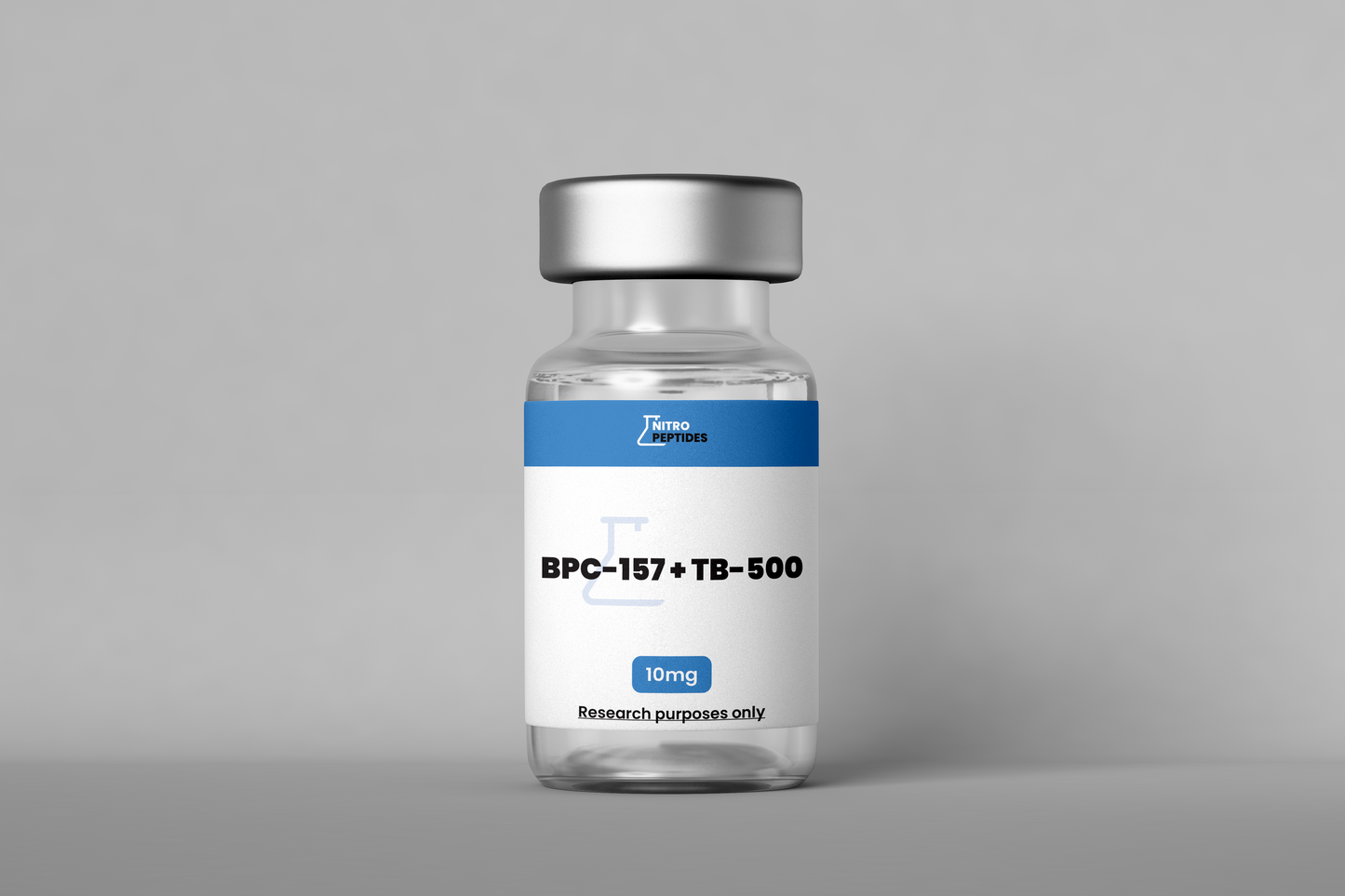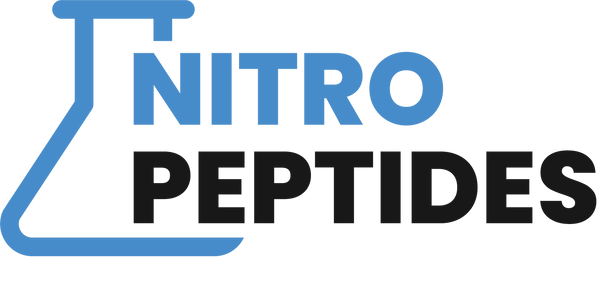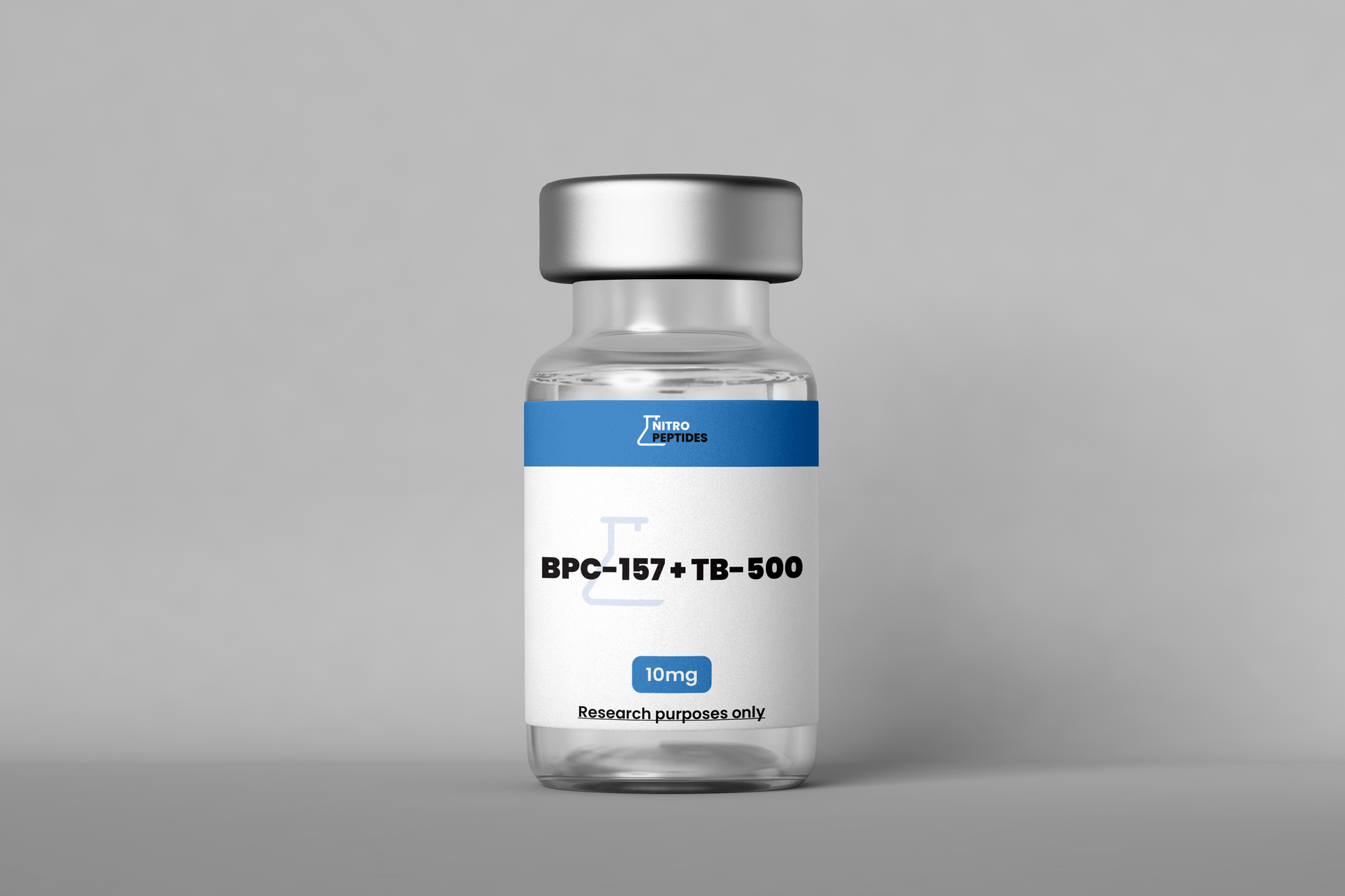Nitro Peptides
BPC-157 & TB-500
BPC-157 & TB-500
On backorder
Couldn't load pickup availability
BPC-157 & TB-500 – Synergistic Peptide Combination for Regenerative Research
BPC-157 and TB-500 form a popular combination of research peptides with complementary effects on muscle and connective tissue repair. This blend is regularly used in preclinical models to analyze processes such as anti-inflammation, cell regeneration, and wound healing. Thanks to their synergistic effect in tissue research, many researchers choose to buy BPC-157 & TB-500 for use in regenerative research.
Function of BPC-157 & TB-500 according to current research
BPC-157 supports angiogenesis, cell repair, and intestinal regeneration, while TB-500 focuses on cell division, mobility improvement, and inflammation regulation. In combination, these peptides can synergistically accelerate tissue repair and are frequently studied in chronic injury research and connective tissue studies.
Researchers analyze their combined effects on muscle attachments, nerve repair, and scar formation in various preclinical models.
What's in the package?
- 1 vial with 10 mg BPC-157 & TB-500 peptide blend (lyophilized)
- Bacteriostatic water
- Several needles for reconstitution (0.5ml - 0.30 x 8mm)
- Alcohol wipes for optimal hygiene
- A small extra as a thank you for your order
Order today, shipped tomorrow (on working days). Discreet packaging for privacy.
Storage
- Application: Supplied in powder form (lyophilized)
- Storage: Store refrigerated after dissolution (2–8°C)
- Stability: Stable for up to 30 days after dissolution
Guaranteed Quality
Each batch of BPC-157 & TB-500 is thoroughly tested for purity and sterile properties. We guarantee 99% purity with an accompanying COA report, visible with the product photos.
Note: For Research Only
This product is intended for preclinical and laboratory research only. Not approved for human consumption or therapeutic use.
Order today, shipped tomorrow (on working days). Packaged in discreet packaging for privacy.
Learn more about BPC-157 & TB-500?
Check out our extensive blog about BPC-157 & TB-500 for scientific background and updates. Visit our blog page for even more articles.

Collapsible content
What is BPC-157 & TB-500
How does BPC-157 & TB-500 work
BPC-157 & TB-500 in preclinical research
Application areas & research focus

